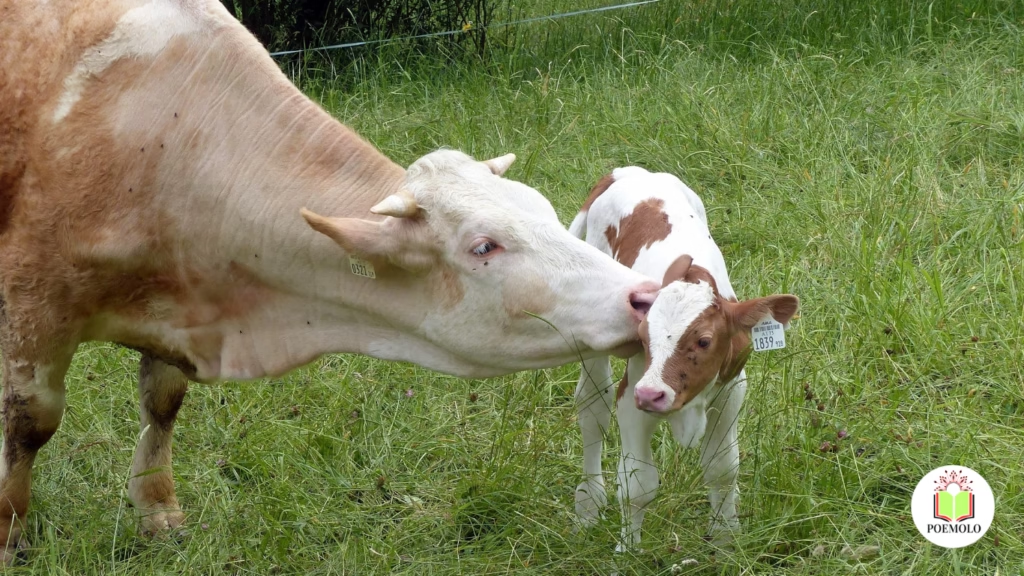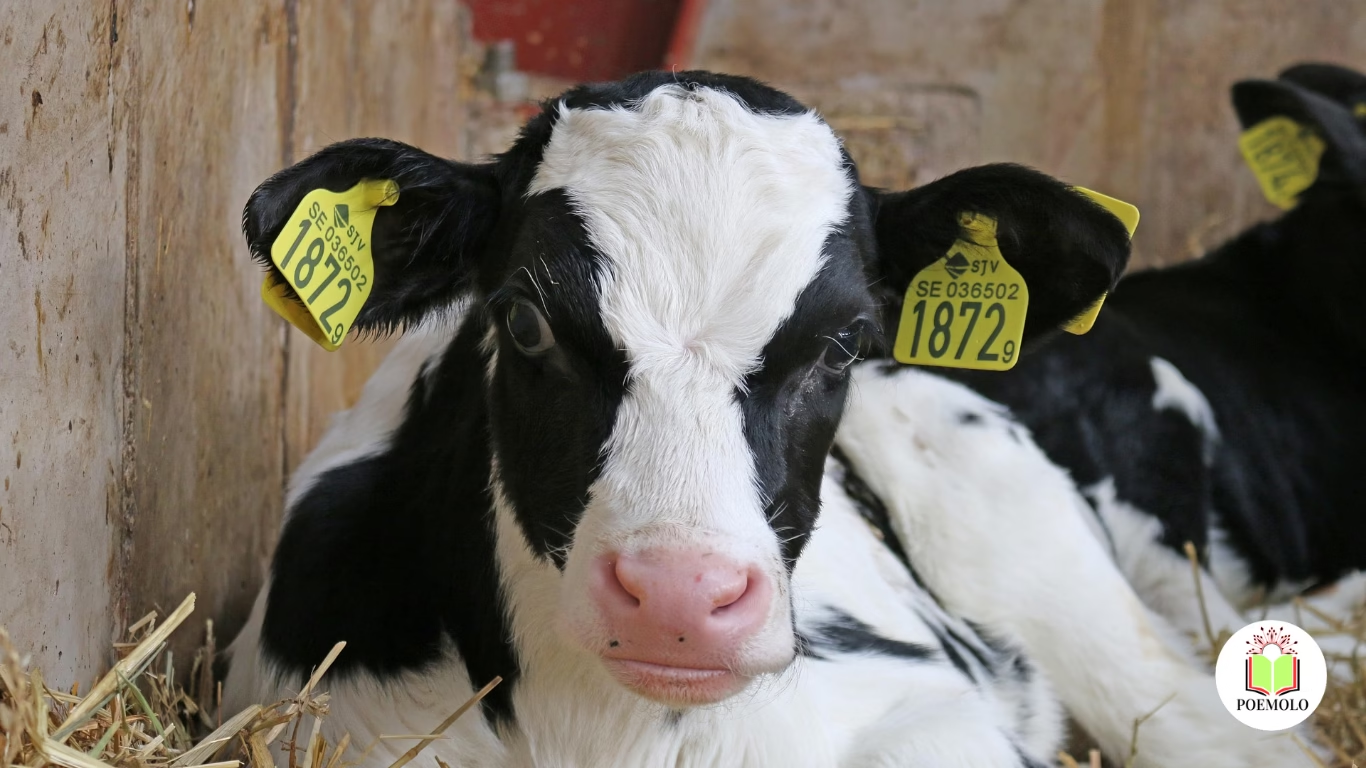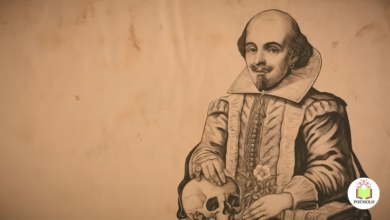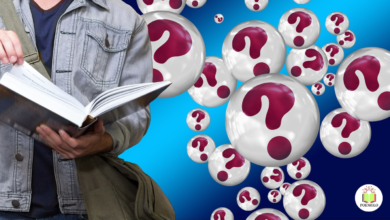The Two Headed Calf Poem, written by Laura Gilpin, is a work that engages readers with its strange, haunting imagery and its exploration of deep human themes. The poem itself is a meditation on imperfection, loss, and the fragility of life, delivered through the striking image of an animal born with two heads.
Through this unusual symbol, Gilpin invites us to reflect on how society views anomalies, how we respond to differences, and how we come to terms with the realities of our own imperfections.
This comprehensive article will explore the Two Headed Calf Poem in detail, offering an analysis of its themes, literary devices, and the ways it speaks to larger societal concerns. By breaking down the poems core components, we aim to understand not only its structure but also the underlying messages it imparts to readers.
What is the Two Headed Calf Poem?

At the center of the Two Headed Calf Poem lies a peculiar image — that of a two-headed calf. The image itself is fascinating and unsettling, immediately prompting readers to ask questions about its symbolism and significance. Is it a metaphor for something deeper? What does it reveal about how we view life and death, the normal, and the abnormal?
Laura Gilpin’s poem explores the emotional weight of this visual and raises larger questions about existence, identity, and human fragility. In addition to the bizarre imagery, Gilpin weaves together themes of compassion, death, and resilience, encouraging readers to think more deeply about how we respond to the unexpected and the uncomfortable.
In this article, we will examine the poem’s themes in depth, analyze its use of literary devices, and explore its place within the broader context of modern poetry. We will also look at how Gilpin’s work challenges readers to embrace the imperfections of both life and the creatures within it.
Two-Headed Calf
by Laura Gilpin
The two-headed calf
was born with two heads.
One face was round and large,
the other narrow and sharp.
The farmer’s wife,
who had the misfortune
to see it, said it would die.
The farmer said it was only
a thing to be thrown away.
The calf lived.
It grew fat and crooked.
It ate grass and passed water.
Its double mouth was open,
like a family’s, a mouth
with a hole inside, a hole
that no one could fill.
Below is an analysis table for “Two-Headed Calf” by Laura Gilpin that breaks down key elements of the poem and provides insights into its themes, literary devices, and meanings.
| Element | Explanation | Impact/Meaning |
| Title | “Two-Headed Calf” | The title immediately introduces the central symbol of the poem, the two-headed calf, which is rare, abnormal, and a key symbol of imperfection and duality. |
| Setting | A farm, with reference to the farmer and his wife | The setting is simple and rural, emphasizing the mundane reality of farm life while introducing the surreal image of the two-headed calf. |
| Imagery | “One face was round and large, the other narrow and sharp.” | The image of two heads with contrasting characteristics presents a visual contrast between softness and sharpness, representing duality. |
| Symbolism | The two-headed calf | The two-headed calf symbolizes imperfection and duality—the coexistence of opposites. It reflects human fragility, inner contradictions, and the complexity of life. |
| Tone | Somber, empathetic | The tone conveys a sense of compassion for the calf’s condition, even though it’s seen as an oddity by the farmer and his wife. It emphasizes acceptance. |
| Theme: Imperfection | The calf is born with two heads, which are seen as abnormal and flawed. | The poem emphasizes the natural imperfection of life and how even something considered flawed can survive, grow, and be worthy of care. |
| Theme: Survival | “The calf lived. It grew fat and crooked.” | Despite being seen as a freak or a mistake, the calf survives and thrives, symbolizing the resilience of life, even in its most vulnerable forms. |
| Theme: Death & Life | The calf is described as likely to die but continues to live. | This suggests the fragility of life, where even imperfection continues to endure. It speaks to the inevitability of death and the persistence of life. |
| Characterization | The farmer’s wife and the farmer have contrasting views on the calf’s fate. | The differing perspectives of the characters represent how people react to differences or anomalies—the farmer and his wife see the calf as a problem, but it lives on. |
| Symbolism of the Mouth | “A mouth with a hole inside, a hole that no one could fill.” | This symbolic mouth represents a void, something empty and unfulfilled. It can refer to the emptiness in life or the unanswerable questions that arise from imperfection and mortality. |
| Theme: Compassion | The poem emphasizes tenderness toward the calf despite its deformity. | The poem subtly calls for compassion for those who are different, encouraging readers to see beyond appearances and appreciate the value in the flawed. |
| Rhyme & Meter | Free verse; lacks a consistent meter or rhyme scheme. | The free verse form reflects the unpredictability of life and the calf’s condition. It mirrors the natural chaos and unpredictability of imperfection. |
Laura Gilpin’s Style and Influence
Before diving into a detailed analysis of the poem, it is essential to understand the author’s background and the influence of her literary style. Laura Gilpin, born in the United States, is a contemporary poet whose works often explore the human condition with sensitivity and emotional depth.
Her poetry is known for its ability to combine striking, often unsettling images with profound reflections on life, death, and human vulnerability.
Related article: The Magic of a Short Poem with Allusion
Gilpin’s style is marked by concise, clear language, yet her work frequently delves into complex emotional and philosophical territories. Her use of imagery is particularly striking, and in the Two Headed Calf Poem, her ability to evoke strong emotions through a seemingly simple image demonstrates her mastery of this technique.
Throughout her career, Gilpin has demonstrated an ability to provoke deep thought and stir compassion in readers, and The Two Headed Calf Poem is a prime example of this talent.
Gilpin’s exploration of oddities and deformities as symbols of larger human themes is central to her poetic identity. She does not shy away from presenting uncomfortable images, but she balances this with tenderness and empathy, urging readers to see the beauty in imperfection.
The Central Image: The Two-Headed Calf
The image of the two-headed calf is central to the poem and serves as both a literal and metaphorical figure throughout the work. This rare and strange creature, born with two heads instead of one, immediately captures attention. But what does this image symbolize? Is it merely a grotesque curiosity, or does it have deeper meaning?
1. Imperfection and Duality
One of the most significant aspects of the two-headed calf is its imperfection. In nature, this deformity is highly unusual, often resulting in the calf’s early death. This anomaly serves as a reminder that life is fragile and unpredictable, and that imperfections can be a source of deep emotional and philosophical reflection.
But the calf’s two heads also represent duality. It is a creature that is both whole and broken, both normal and abnormal. This dual nature speaks to the contradictions inherent in human existence: the way we can simultaneously hold multiple, sometimes opposing, identities or emotions. The two-headed calf could be seen as a metaphor for the conflicting forces within each person, reflecting our complex, multifaceted nature.
2. A Fragile Existence
The calf’s deformity also calls attention to the fragility of life. Deformities in nature often carry with them the possibility of early death, and the calf, as a symbol, reminds us that life, even in its most fragile form, is a fleeting experience.
Related article: The Power of a Short Love Poem
This fragility is something that both humans and animals share, and it is something that we often try to ignore or hide. However, Gilpin’s portrayal of the two-headed calf does not shy away from this reality, instead presenting it with an underlying sense of tenderness and acceptance.
3. Acceptance of Imperfection
Interestingly, Gilpin does not focus on the grotesque nature of the two-headed calf. Rather, she encourages readers to approach the creature with compassion and acceptance, suggesting that imperfection is not something to be feared or rejected.
The calf’s strange beauty is there for the reader to behold, inviting a deeper conversation about how we respond to the abnormal or the imperfect.
Key Themes in the Two Headed Calf Poem

1. Imperfection and Human Fragility
The theme of imperfection is central to the Two Headed Calf Poem. Just as the calf is born with two heads, human beings too are born with imperfections—physical, emotional, or psychological. The poem encourages us to consider how we view imperfection in both ourselves and others. Is it something to be ashamed of or feared? Or is it something that should be embraced and accepted?
The calf’s deformity also mirrors the inherent fragility of life. Just as this rare animal is vulnerable due to its deformity, so too are we all vulnerable in different ways. The poem asks us to reflect on the inevitability of death, the ephemeral nature of life, and the importance of embracing life in all its fragility and imperfection.
2. Death and the Cycle of Life
The concept of death also features prominently in the poem. The two-headed calf is a creature that, by its very nature, is unlikely to survive for long. This inevitability speaks to the larger cycle of life. Death is a part of existence, and while it may seem tragic, it is also natural and should be accepted.
Gilpin’s portrayal of the calf with two heads invites us to reflect on how we live and how we die, encouraging us to embrace both life and death with compassion and understanding.
Gilpin does not present death as something to be feared, but rather as an inevitable part of the human experience. The calf, in all its imperfection, is a symbol of the cycle of life—its beginnings, its fragility, and its eventual end.
3. Compassion and Empathy
Another core theme in the poem is compassion. The two-headed calf may be seen as an oddity or curiosity, but Gilpin urges readers to approach the calf with empathy. She calls on us to consider the emotional and psychological experience of those who are different, whether due to physical deformity, emotional struggle, or societal exclusion.
Related article: What Are Different Tones in Poems About Racial Identity?
Rather than seeing the calf as an object of pity or disgust, the poem suggests that we should treat it with the same kindness and understanding that we would offer any living being.
This call for compassion extends beyond the calf and speaks to how we treat others in society. The poem serves as a reminder that we should look beyond external appearances and embrace differences with empathy.
Literary Devices in the Two Headed Calf Poem
1. Imagery
The most prominent literary device in The Two Headed Calf Poem is imagery. The image of the two-headed calf is arresting and difficult to forget. This strong visual metaphor carries layers of meaning, evoking a sense of discomfort, beauty, and fragility. Gilpin uses this vivid image to draw the reader into a space where larger philosophical questions about life, death, and imperfection can be explored.
2. Metaphor
The two-headed calf is also a metaphor for duality and the complexity of identity. The animal’s two heads are a symbol of the multiple, sometimes conflicting, aspects of life and self. Just as the calf cannot be reduced to one head, we too cannot be reduced to one simple identity. Gilpin uses this metaphor to illustrate how we all hold within us various, often contradictory, parts of ourselves.
3. Tone and Voice
The tone of the poem is reflective and empathetic. Gilpin does not treat the calf with disdain or judgment. Instead, she presents it with a tone that suggests acceptance, compassion, and understanding. The voice of the poem is gentle, inviting readers to explore the idea of imperfection with a softened gaze.
4. Symbolism
In addition to the calf’s dual heads, the two-headed calf is also a symbol of life’s fragility, death, and the acceptance of imperfection. The strangeness of the calf, though uncomfortable at first glance, ultimately becomes a symbol of beauty in its vulnerability.
Conclusion
The Two Headed Calf Poem by Laura Gilpin continues to resonate with readers for its ability to touch on timeless themes of imperfection, fragility, and compassion. Through its use of striking imagery, emotional depth, and empathetic tone, the poem challenges readers to reflect on how we view and treat the imperfect and the different in society.
The two-headed calf serves as a powerful metaphor for the complexities of the human experience, reminding us of our own vulnerabilities and the inevitability of death. Yet, Gilpin’s portrayal is not one of despair, but of acceptance and empathy. By embracing the imperfection of the calf, we are invited to do the same with our own flaws, as well as the flaws of others.
In the end, the Two Headed Calf Poem stands as a testament to the importance of seeing beauty in the most unexpected places and extending compassion to all forms of life, no matter how fragile or different they may be.





